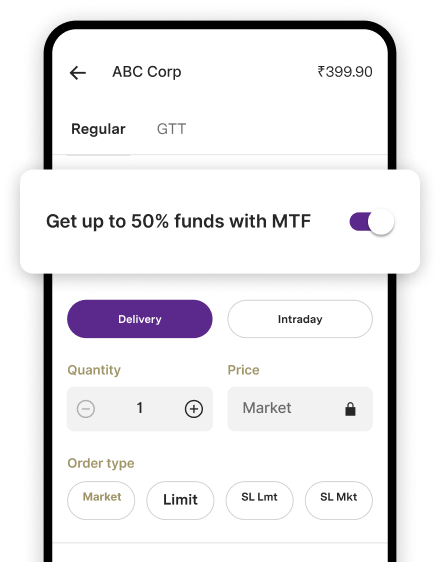5 Smart Financial Tips for Young Adults
Summary: Your 20s and 30s are a crucial time to start building a strong financial future. By making smart money decisions now, you can set yourself up for success later in life. In this blog post, we'll share five essential financial tips for young adults, including budgeting, saving, investing, and retirement. Money management secures your future, whether that's covering an unexpected bill or saving for a significant purchase. It involves budgeting, saving, and investing – essential skills for a stable financial future that are frequently overlooked in education. This blog will guide you through five practical financial tips that are simple to understand and apply. So, let's get started. Top 5 personal financetips for young adults Handling your money well is key—it's what keeps you secure when life throws surprises and helps you grow your savings for the future. It's about saving where you can, investing with a plan, and not spending more than what comes in. Nailing these basics can turn things around for you. So here they are, the top five financial tips for young adults: - Create a budget and track your expenses Budgeting is about tracking your income and expenses to make sure you spend less than you earn. It's creating a plan for your money, so you're in control of where it goes. Let's say you bring home INR 30,000 a month. You might allocate INR 10,000 for rent, INR 7,000 for food, and INR 3,000 for travel. Out of what’s left, you could put INR 5,000 into savings for emergencies or future goals, and the remaining INR 5,000 could cover your mobile plan, internet, or a weekend outing. This way, you've got your expenses covered, your savings on the rise, and still keep some money aside for leisure and unexpected needs. It's about making intentional choices so that you can balance today's needs with tomorrow's plans. - Start saving today Saving helps you build an [emergency fund](https://upstox.com/market-talk/emergency-fund-101-how-to-start-and-why-its-crucial-for-your-finances/), a cushion of money for unexpected expenses or emergencies. It also enables you to reach your short-term and long-term goals, like buying a car, going on holiday, or starting a business. A good rule of thumb is the 50/30/20 strategy. After you've covered your necessary expenses, 50% of your income, allocate 20% directly to your savings. For a monthly income of INR 30,000, that's INR 6,000 going into your savings each month. You can channel these funds into [mutual funds](https://upstox.com/learning-center/mutual-funds/the-basics-of-mutual-funds/), which often yield higher returns over time compared to a regular savings account. The remaining 30% of your income can then be used for discretionary expenses. By sticking to this rule, you automatically prioritise your financial future every month, steadily building a fund that can support big life events or tide you over during tough times. - Invest your money wisely Investing allows your money to actively work for you by acquiring assets that may generate income or appreciate over time. It's a handy way to grow your funds, beat inflation, and hit major milestones like buying a house, funding your studies, or setting up a cosy retirement. Take mutual funds, for instance. You can start small with SIPs from INR 500 and gradually build a mixed bag of investments. If you're not big on taking risks, a balanced mutual fund could be your thing, offering a steady blend of stocks and bonds. Make sure your investment picks match how much risk you're okay with, how long you plan to invest, and what you're hoping to achieve financially. - Plan your retirement ahead Retirement may feel like a dot on the horizon, but the earlier you begin, the better off you'll be. Consistently contributing a manageable amount, say INR 2,000, to a retirement plan like the [NPS](https://upstox.com/saving-schemes/nps-national-pension-scheme-india/), each month can amass a substantial sum over the years. This is where compounding comes into play – the interest you earn starts earning interest of its own, and over time, this growth accelerates. So, by starting in your 20s, you give your savings the longest possible time to expand, ensuring you a more comfortable and financially secure retirement. - Understand taxes Familiarising yourself with tax-saving opportunities, like investing in the [public provident fund (PPF)](https://upstox.com/saving-schemes/public-provident-fund-ppf-interest-rate/) and [equity-linked savings schemes](https://upstox.com/learning-center/mutual-funds/what-is-elss-and-how-to-invest-in-elss/) (ELSS) under Section 80C, can make a big difference to your finances. For those in a higher tax bracket, directing up to INR 1.5 lakh into a PPF can significantly cut your taxable income. This astute handling of taxes ensures you're not just meeting legalities but also retaining more income for your aspirations. Your best investment is in your financial education. Stay informed about financial products and market trends. This doesn't mean you need to become an expert overnight but understanding the basics of investments, insurance, and savings will help you make smarter decisions. Wrapping up: Key points to remember - Begin with small investments and increase over time, balancing risk with a mix of assets for long-term growth. - Small, regular contributions to a retirement fund can grow significantly, thanks to compounding interest. - Investing in options like PPF and ELSS can reduce taxable income and maximise savings. Note: To help plan your trading activities and investment strategies, find here the [NSE Holidays 2023](https://upstox.com/stocks-market/nse-holidays-2023/), [BSE Holidays 2023](https://upstox.com/stocks-market/bse-holidays-2023/), [MCX Holidays 2023](https://upstox.com/stocks-market/mcx-holidays-2023/), and [Muhurat Trading 2023](https://upstox.com/stocks-market/muhurat-trading-2023/). Also see here to know more about the [stock market timings](https://upstox.com/stocks-market/nse-bse-share-market-timing-in-india/).

